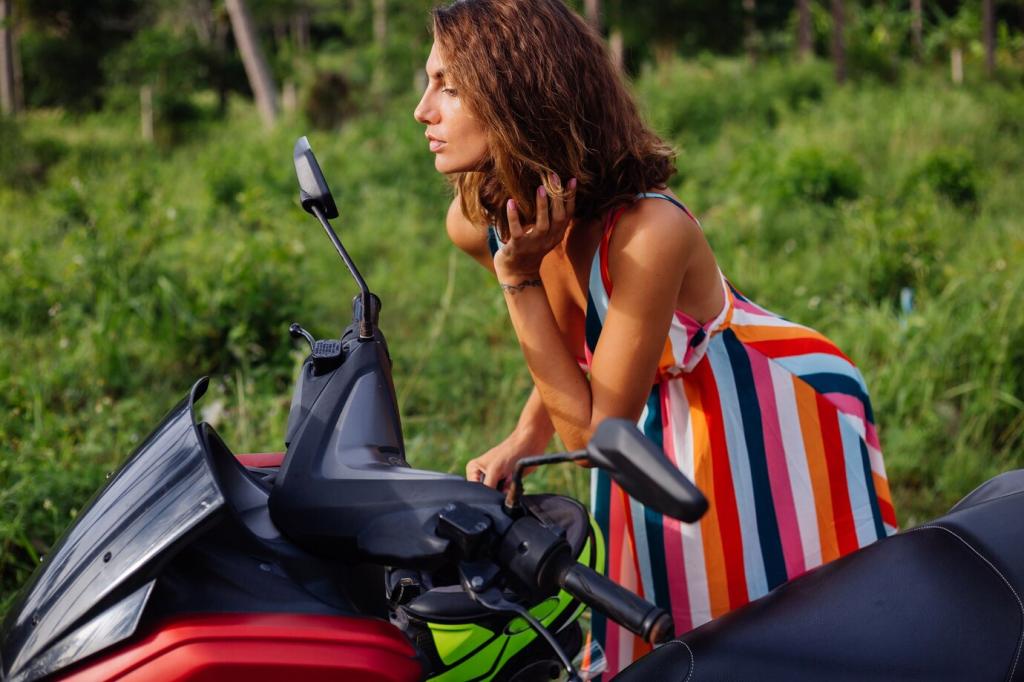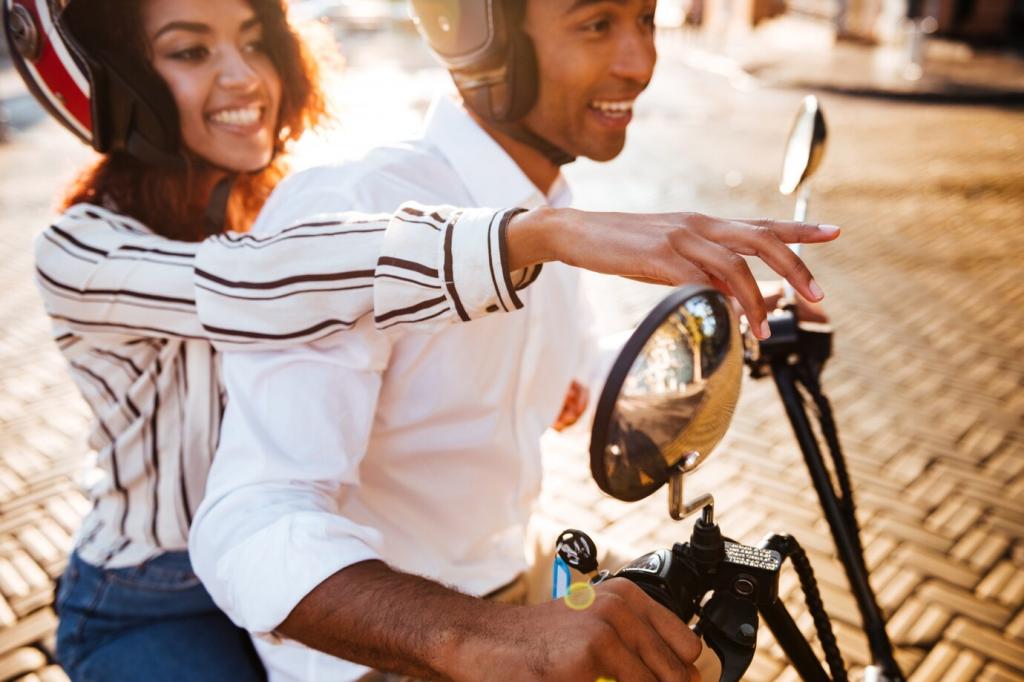Beginner's Guide to Packing for a Group Motorcycle Trip
Selected theme: Beginner’s Guide to Packing for a Group Motorcycle Trip. Whether you’re riding pillion for the first time or leading your crew, this guide brings clarity, confidence, and camaraderie to your packing. Expect practical tips, real road stories, and a friendly nudge to travel lighter, safer, and smarter together. Ride along, share your thoughts, and subscribe for more group-ready checklists and packing wisdom.

Agree on a Shared Packing Philosophy
Pick a simple rule: every ounce counts, function beats fashion, and nothing untested comes along. Aligning on a philosophy prevents last‑minute debates, helps beginners feel supported, and keeps the group focused on safety, comfort, and fun throughout the entire ride.
Assign Communal Items to Avoid Redundancy
Divide group gear like stoves, tire pumps, tools, first aid, and water filters. One carries the pump, another the stove; everyone benefits. Beginners gain space, the team reduces weight, and morale stays high because every rider contributes something essential to the shared journey.
Create a Live Checklist Everyone Can Access
Use a shared document with real‑time updates and owners’ names next to each item. As plans shift, your checklist adapts. Invite new riders to comment on confusing entries, ask questions, and subscribe for future templates that make every group trip smoother from day one.

Safety First: Helmet, Gloves, and Impact Protection
Choose a certified helmet that fits snugly, gloves with solid abrasion resistance, and armor that you’ll actually wear. Beginners often pack great gear but neglect comfort, leading to fatigue. Comfort equals consistency, and consistent protection keeps group rides enjoyable and uneventful.
Navigation and Communication Tools
Load offline maps, pair intercoms, and pack a paper route sheet as a backup. Assign a navigator and a sweeper. Clear communication reduces wrong turns, keeps fuel stops timely, and lets beginners speak up early when something feels off or needs a quick adjustment.
Documents, Money, and Emergency Info
Carry license, registration, insurance, health card, and a printed emergency contact list. Keep a small stash of cash, because card readers fail. Beginners feel calmer knowing essentials are reachable, waterproofed, and organized, especially when crossing borders or navigating unexpected roadside checks.
Choosing and Balancing Luggage on Your Bike
Saddlebags, Top Cases, and Dry Bags
Hard cases protect and lock; soft bags save weight and flex in low‑speed bumps. Dry bags excel for tents and sleep systems. Beginners should test loading on a short ride first, then refine placements before the group departs, avoiding constant mid‑trip repacking and frustration.
Weight Distribution for Safer Handling
Pack heavy items low and forward, splitting weight evenly left to right. Keep daily essentials accessible on top. Proper distribution steadies cornering, braking, and slow maneuvers, which matters when the group tightens up through traffic, gravel pullouts, or unexpected construction zones.
Secure Your Load with Reliable Straps
Use quality cam straps or Rok Straps, avoid fragile bungees, and tuck loose ends. After the first hour of riding, recheck all connections. Beginners gain huge confidence when nothing shifts under acceleration or crosswinds, and the group avoids stops to chase a rogue rainfly down the highway.
Clothing Strategy: Layers for Changing Weather
Synthetic or merino base layers manage sweat; a breathable mid layer traps warmth; a protective shell blocks wind and rain. Beginners frequently overpack heavy sweaters. Instead, choose versatile pieces that stack well and dry fast, keeping comfort high and luggage bulk low all day.


Compact Tool Roll Essentials
Carry bike‑specific wrenches, bits, zip ties, tape, and a headlamp. Keep tools where you can reach them without unpacking everything. Beginners feel empowered after practicing simple tasks, and the group moves faster when several riders know exactly where the shared kit lives.
Tire Repair, Air Solutions, and a Plan
Bring plugs or patches, valve cores, and either CO₂ or a compact pump. Assign who carries what. Run a quick drill in a parking lot before departure. Confidence grows, and flats become solvable hiccups rather than stressed roadside scenes that derail everyone’s day and route.
First Aid Tailored for Riders
Stock bandages, antiseptic, blister care, pain relief, and an emergency blanket. Include personal meds and allergy info. Beginners should know who carries the kit and how to use it. Encourage your group to take a basic course and share post‑ride learnings for continuous improvement.
Food, Water, and the Shared Camp Kitchen
Use hydration bladders or bottles you can reach without dismounting. Sip steadily instead of chugging at stops. Beginners riding in groups often forget to drink; set timed reminders on your comms, and swap tips in the comments for staying hydrated without constant detours.
Food, Water, and the Shared Camp Kitchen
Dehydrate meals or pack quick‑cook staples. Assign one stove and fuel carrier, rotate dish duty, and keep a tiny spice kit. Beginners love the routine: boil, share, laugh. It saves money, strengthens the group bond, and reduces bulky duplicates scattered across multiple bikes unnecessarily.

Practice Makes Pack‑Perfect: Rehearse and Refine
Do a Full Dress Rehearsal at Home
Load the bike, gear up, and ride a loop with a coffee stop. Notice hot spots, shifting straps, or annoying zippers. Beginners who troubleshoot early arrive calmer on day one, helping the group leave on time without last‑minute packing puzzles or chaotic driveway repacking sessions.
Create a Calm Morning Pack‑Up Routine
Assign five fixed locations for key items—wallet, keys, phone, earplugs, and visor cleaner. Follow the same sequence every morning. Groups that standardize routines leave efficiently and avoid panicked searches that delay the day’s first fuel stop and throw off the entire schedule.
Anecdote: The Forgotten Tent Pole
On a windy ridge, we discovered one rider’s tent sagging comically—poles left on the garage floor. The group improvised with spare straps and laughter. The lesson for beginners: pack with a printed checklist, cross‑check with a buddy, and share your near‑miss stories to help others.

Digital Prep: Apps, Maps, and Power Management
Offline Maps and Route Files
Download maps and export GPX to multiple devices. Print the overview route for glovebox backup. Beginners gain confidence knowing a wrong turn won’t derail the ride. Ask your group which mapping app they trust, and subscribe for our quarterly roundup of navigation tools that actually work.
Group Communication Etiquette
Set simple callouts: “Fuel in five,” “Hazard left,” or “Photo stop ahead.” Keep chatter low when traffic tightens. Clear etiquette lets beginners speak up without fear, while the group stays focused, predictable, and considerate to other road users on twisty or crowded sections.
Backup Power and Cable Discipline
Carry a compact power bank, bike charger, and labeled cables in a small pouch. Moisture‑proof critical connectors. Nothing sours morale like a dead comms unit mid‑day. Beginners should pair devices the night before and confirm charging at breakfast to keep the whole crew connected.
